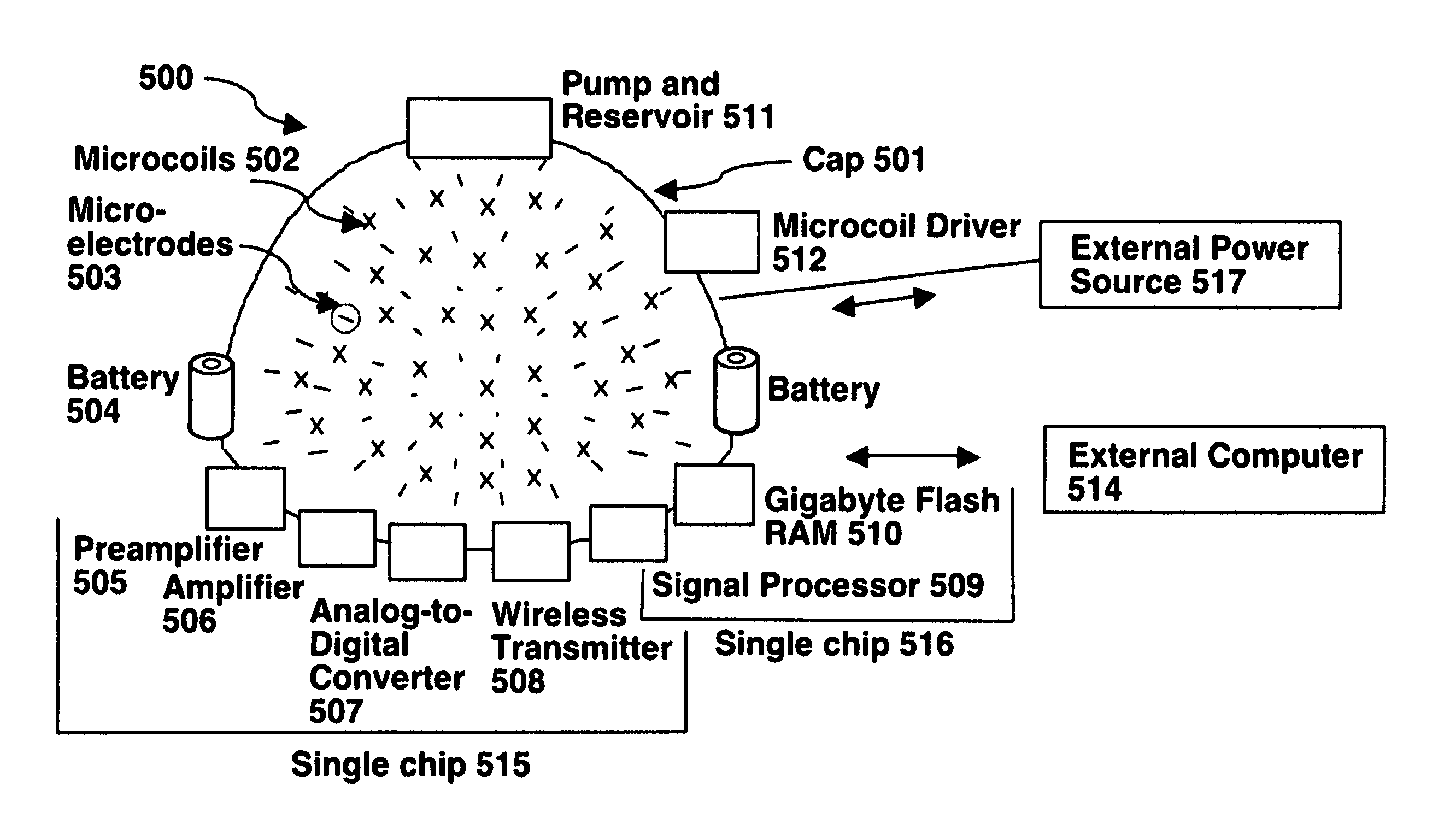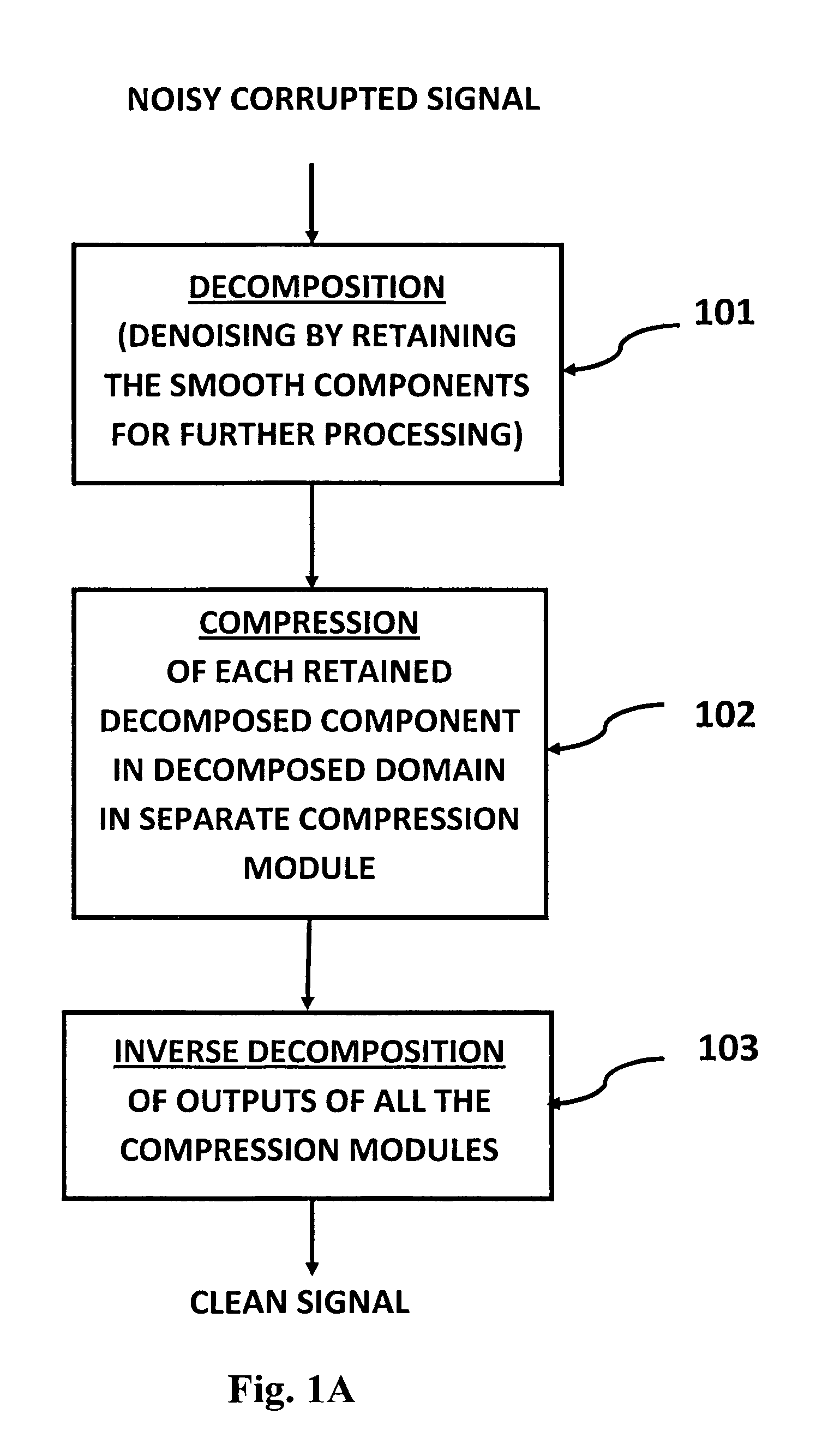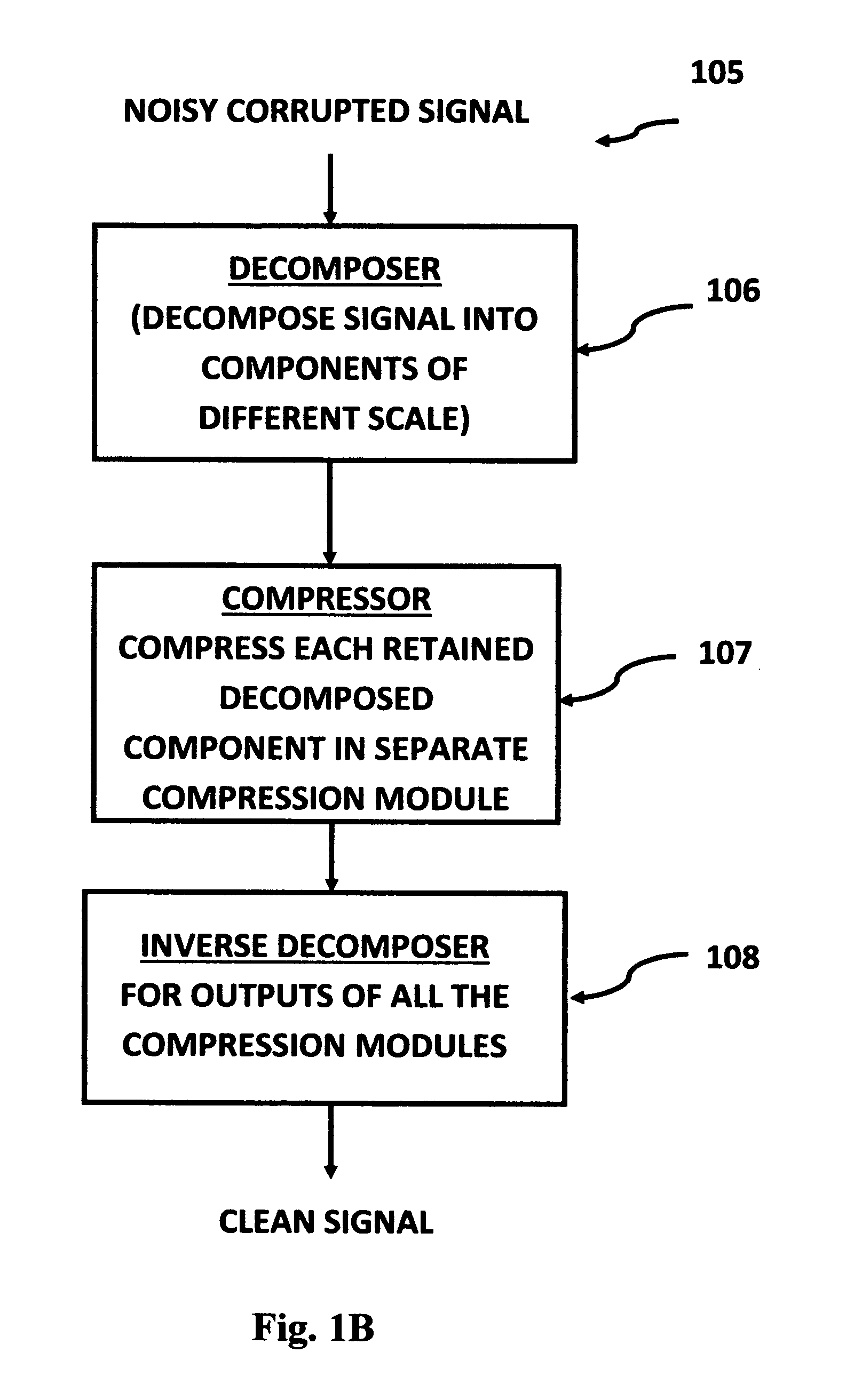Apparatus for measurement and treatment of a patient
a patient and patient technology, applied in the field of signal processing, can solve problems such as affecting storage and transmission, reducing the accuracy of data compression, and reducing the accuracy of data production
- Summary
- Abstract
- Description
- Claims
- Application Information
AI Technical Summary
Benefits of technology
Problems solved by technology
Method used
Image
Examples
Embodiment Construction
[0040]Generally, the present invention is directed to a signal processing method and system capable of extracting very low level signals embedded in high levels of noise from a signal of unknown features. In particular, the present invention is a denoising and signal extraction technique based on a combination of multi-scale decomposition and compression technologies with one compression-module for processing a corresponding scale in the decomposed domain. The decomposition generally serves to segment the data into smaller subsets, i.e. decomposed components, each of a different size scale. By using one or more of the decomposed components for subsequent processing, the signal may be separated from the noise coming from various sources. Furthermore, within each scale of the decomposed components, the embedded noise for that scale should be smaller than the entirety of the noise and thus lends itself better for noise removal. As a result, the use of multiple compression modules serve...
PUM
 Login to View More
Login to View More Abstract
Description
Claims
Application Information
 Login to View More
Login to View More - R&D
- Intellectual Property
- Life Sciences
- Materials
- Tech Scout
- Unparalleled Data Quality
- Higher Quality Content
- 60% Fewer Hallucinations
Browse by: Latest US Patents, China's latest patents, Technical Efficacy Thesaurus, Application Domain, Technology Topic, Popular Technical Reports.
© 2025 PatSnap. All rights reserved.Legal|Privacy policy|Modern Slavery Act Transparency Statement|Sitemap|About US| Contact US: help@patsnap.com



